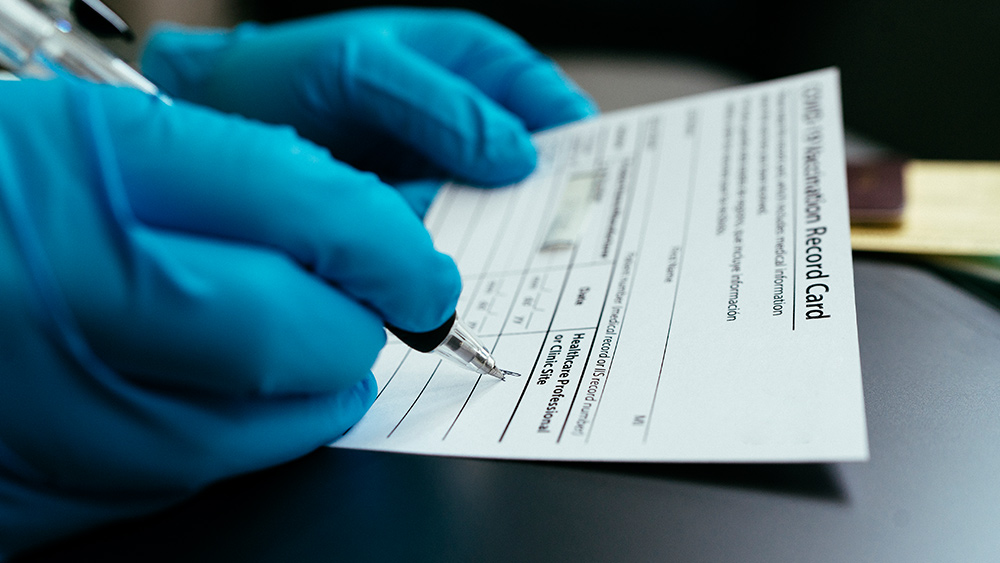Research shows amalgam dental fillings expose pregnant women to DANGEROUS mercury vapor levels
02/26/2024 / By Zoey Sky

Researchers have warned that having even just one amalgam dental filling exposes pregnant women to potentially dangerous mercury vapor levels. The recent study also revealed that having multiple fillings increases women’s exposure and risks proportionally.
Details of the study were published in the journal Human & Experimental Toxicology.
Dental amalgam fillings are made from a mixture of mercury and other metals. Mercury is the only metal that is liquid at room temperature. As a liquid, mercury evaporates and turns from liquid to gas. Inhaling mercury vapor is a significant source of mercury exposure.
Other mercury sources include fish and seafood, industrial processes and products. Individuals who work in certain professions where mercury is more used like mining are also at higher risk of mercury exposure. (Related: Robert Scott Bell: Neurological degradation diseases are the result of poisons, waste products, exposure to mercury and aluminum – Brighteon.TV.)
More fillings mean higher exposure to mercury
Dr. Mark Geier, the study’s lead researcher, reviewed data on 1,665,890 pregnant women from the 2015-2020 National Health and Nutrition Examination Survey (NHANES).
Geier, who is an advocate for mercury-free pharmaceuticals, found that out of all the women who took part in the survey, 606,840 had at least one dental amalgam filling and 1,059,050 did not.
During the NHANES intake exam, pregnancy was determined through a rapid pregnancy test. Researchers also conducted a confirmatory clinical-grade blood test for human chorionic gonadotropin, a hormone that is released during early pregnancy. The number of amalgam dental fillings was verified via a standard dental examination.
After measuring mercury levels in the volunteers’ urine and their daily urine output, the researchers computed each person’s daily mercury exposure from inhaling mercury vapor released from their fillings.
The researchers expressed these values as micrograms (mcg) of mercury per kilogram of body weight per day (mcg of Hg/kg/day), which is how regulators and agencies express toxic metal exposures.
Geier compared calculated daily mercury exposures to “safe” exposure limits from four government agencies and another study. The researchers listed exposure limits by increasing stringency. The highest was the Environmental Protection Agency (EPA) exposure limit at the top while California’s standard, which is almost tenfold lower, was at the bottom.
The study found that even women without fillings were exposed to mercury other than from dental fillings. Mercury levels for women with and without fillings were 0.99 mcg and 0.41 mcg of Hg/kg/day, respectively.
Findings also revealed that exposure through fillings, “when combined with exposures from non-amalgam sources, “promotes” many women with low-level non-dental mercury exposure into high-exposure categories.”
Moreover, 28 percent of all pregnant women were found to exceed daily mercury exposure levels, according to the least-stringent EPA standard, while 36 percent exceeds California’s strict standard.
However, for women with fillings, 77 percent, which is more than double, exceeded the EPA standard and 100 percent, or almost three times, were short of California regulations.
Geier explained that California’s standards are so strict that pregnant women with one filling “would have to weigh more than 100 kilograms (220 pounds) to not receive a Hg vapor dose from their amalgam not more than the most restrictive California EPA Hg vapor safety limit.”
Geier also reported that the more fillings a pregnant woman had, the higher the mercury levels in her urine. To quantify this value Geier calculated a beta-coefficient, which relates the number of fillings to excreted mercury levels.
Data showed that among pregnant women, this relationship was highly statistically significant and likely clinically significant. Geier said the beta-coefficient or sensitivity to the number of fillings was double what he had observed in an earlier study on mercury exposure in adults.
“This difference may indicate that pregnancy status has an important physiological impact on increasing exposure/distribution of Hg vapor from amalgams. More American pregnant women exceeded the US EPA Hg vapor safety limit (30% vs 10%) and the US ATSDR Hg vapor safety limit (32% vs 21%) in this study as compared to American adults in our previous study,” wrote Geier.
Visit MercuryScienceNews.com to learn about the dangers of mercury exposure.
Watch the video below to learn more about the health issues linked to mercury.
This video is from the Puretrauma357 channel on Brighteon.com.
More related stories:
CLEAN FOOD WATCH: 6 Foods that are likely to be contaminated with heavy metals.
Oral health and pregnancy: Gum disease could be linked to premature births, suggests study.
Sources include:
Submit a correction >>
Tagged Under:
amalgam dental fillings, dental care, dental fillings, mercury, mercury vapor, oral care, oral health, poison, pregnancy, real investigations, research, toxic ingredients, Toxic Metals, toxins, women's health, wpmen's health
This article may contain statements that reflect the opinion of the author
RECENT NEWS & ARTICLES
COPYRIGHT © 2017 REAL INVESTIGATIONS NEWS




















